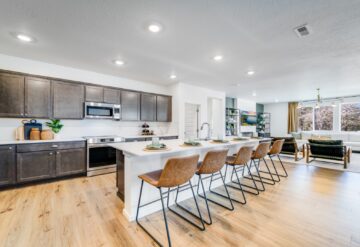How do we choose the places we call “home?” This article from Richard Florida of The Atlantic and CityLab.com delves into the details of a new report from London’s Centre for Cities, that examines what people value most about their neighborhoods.
Choosing a place to live is the single most important decision we make. It has an impact on everything from our career and bank accounts to the people we meet, the relationships we forge, and where we send our kids to school, not to mention our overall happiness and well-being.
A new report from the Centre for Cities – a London-based research and policy institute – takes a detailed look at this question. It uses comprehensive survey data from urban areas across Great Britain to examine what urbanites and suburbanites value the most (and like the least) about the neighborhoods they live in, including key factors like housing costs, proximity to jobs, transit, amenities, open space, and quality of both built and natural environments.
Not surprisingly, the key things that matter to people about the neighborhoods they live in include a mix of housing costs, being close to family, and proximity to where they work. More than a quarter (28%) of respondents cited housing costs and proximity to friends as key factors in the neighborhoods where they live, followed by the size and type of available housing (22%), and proximity to their workplace or their partner’s workplace (21%).
For young people between the ages of 18 and 24, the leading factor (at 28%) is simply that they live in the same neighborhoods where they grew up. This make sense, of course, since many in this age group are still living at home with their parents: 17% said they were studying in the neighborhood. Close behind was proximity to friends and family at 26%, while just 17% said being close to their workplace or their partner’s workplace matters (which makes sense, as fewer in this age group work). But living at home has its drawbacks. This young cohort reported being dissatisfied by a lack of available public transit (19%) and living too far away from restaurants and other leisure facilities (17%). Of course, being close to schools matters little to this age group, and just 7% said they valued being close to green space.
People between 25-34 years of age – the group that is most likely to move to embark on their careers – are more drawn to jobs and amenities than their younger counterparts. Nearly a third of them (31%) valued being close to their workplace or their partner’s workplace. This is about the same as those who said they still lived in the neighborhood where they grew up (32%), and those for whom the cost of housing (30%) was a key factor. A smaller share of this age group (9%) said that being close to restaurants, cultural, and leisure facilities are important attributes of where they choose to live. Eleven percent valued being close to green space and 8% said that the quality of the natural and built environment was a factor. Nine percent said safety and security was a key factor in their choice of neighborhood.
Those in the 35-54 age group – the group most likely to be having families and raising kids – placed a high value on the cost of housing (30%), the size and type of housing (21%), safety and security (17%), and proximity to good schools (13%). With kids in the household, 27% valued being close to family and friends. And after fully entering the working years, a quarter (25%) said that being close to their workplace or their partner’s workplace was important. Twenty percent said that being close to green space was important, and another 11% valued the quality of the natural and built environment. But considerably fewer respondents (just 4%) reported access to restaurants and other cultural amenities as a factor.
People over 55 – retirees and empty-nesters whose kids are out of the household – had different priorities. Topping their list was proximity to the countryside and green spaces (30%), followed by the size and type of housing (29%). Still, nearly a fifth of people in their retirement or close-to-retirement years valued proximity to their workplace or their partner’s workplace. More than a quarter (27%) of people in this age group said being close to family and friends was important. Many older parents, after all, value being close to their adult children. And 17% of older respondents said that the safety and security of the neighborhood was another key factor.




